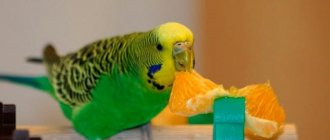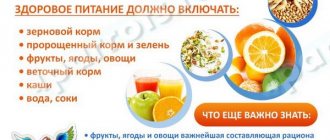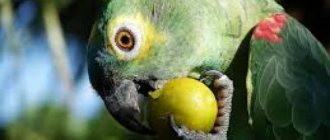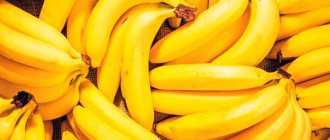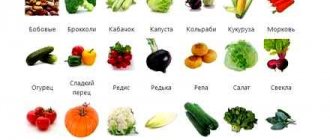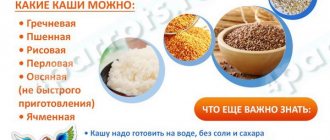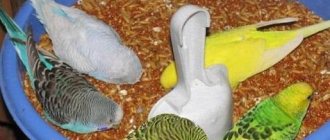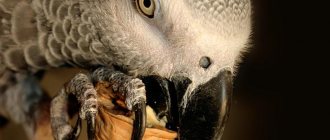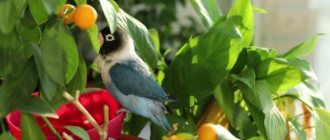Sometimes owners doubt which fruits can be given to parrots and which should be discarded. Birds living in their natural environment instinctively distinguish edible fruits from poisonous ones. You should not deprive your feathered pet of tasty and healthy treats - they are necessary for health. You can pamper your parrot with bright, sweet delicacies and reward him for good behavior.
What fruits can parrots eat?
Parrots can and should be fed fruits: they are rich in vitamins, sugars, fiber, and microelements. The list of permitted fruits is impressive; it contains most types of fruit crops. It is permissible to include in your daily diet:
- apples;
- pears;
- peaches;
- apricots;
- dates;
- grape;
- kiwi.
Feel free to give pears to parrots and apples grown in local orchards. The peel contains concentrated nutrients, so it is not advisable to cut it off. Beautiful imported apples are also allowed, but the wax should be thoroughly washed off with hot water.
Pineapple is high in vitamins, but this fruit is not on the table very often, but only on occasion. You can occasionally treat your pet to a ripe piece. Watermelons and melons are harmless only in August and September. There is no need to remove small bones - birds love to crack them open. There is no reason to wonder whether a parrot can have an orange. Citrus fruits are a storehouse of vitamin C. Birds readily peck at the white subcortex and partitions, and do not disdain the juicy pulp.
You shouldn't take risks by offering papaya and mango to your bird. These fruits are picked unripe to extend their shelf life. They contain substances harmful to birds. But pomegranate is good for the intestines: if a feathered pet pecks at the peel, it will not have inflammatory processes.
Attention! Regarding persimmons, so adored by parrots, one thing can be said: they are not prohibited, but only in a ripe state. If persimmon leaves an astringent aftertaste, it means it contains a lot of tannin, a compound with tannic properties. It can cause digestive upset in birds.
What can a bird do?
Birds will be happy with both dried and fresh fruits. Treats help you better build a strong relationship with your pet and make him sweet and obedient.
Birds will rarely agree to cut up a delicacy on their own, so it is better to prepare each fruit in advance for the bird to eat: grate, cut, turn into pulp. The parrot himself will tell you which preparation is best to make.
If we add to this a huge supply of all spectrums of vitamins in fruits, then we get a healthy, nutritious and pleasant product that improves the mood of both the bird and the owner.
Here is a list of healthy fruits that wavy eaters eat:
apples are a mild mixture of vitamins that will help your parrot better digest the main dish. Contains beneficial plant fibers and organic acids;- orange – contains difficult-to-digest fiber, essential essential oils and carbohydrates. This mixture of substances provides lasting protection against viruses and infections;
- Bananas are a storehouse of calcium, magnesium and potassium. It is highly nutritious, so it is perfect for a quick snack;
- grapes – contains the entire spectrum of microelements and B vitamins. Suitable as a delicacy for heavy food, because helps cleanse the body and remove all accumulated toxins;
- pomegranate – ensures stable functioning of the cardiovascular system of birds;
- apricot - large amounts of sugar, insulin and starch will make the budgie a little happier, and provitamin A, iron and acids strengthen the immune system and reduce the risks of cardiovascular diseases;
- kiwi – ranks first in terms of vitamin C content in fruits. It will make the parrot's feathers soft, pleasant and beautiful, and also protect against viruses;
- pineapple – works on muscles and blood vessels. Strengthens the health of the bird and helps to digest and assimilate food rich in protein;
- pears - ornithologists strongly recommend adding a piece of pear to every diet, because it contains a large amount of pectin, which effectively stimulates digestion. In addition, pears contain carbohydrates, iron and phosphorus.
- watermelon and melon - small amounts are allowed, but only those that you have already tried yourself.
All fruits must be thoroughly washed and peeled so that the budgie does not accidentally choke on the skin. It is also necessary to monitor the presence of seeds, because they contain hydrocyanic acid, which is dangerous for the stomach of birds.
It is also useful to read: How many times a day should you feed a budgie?
The parrot does not want to eat fruit: what is the reason
Parrots are curious, but they are afraid of new things. If the bird has never seen or tasted the fruit, it will be difficult to convince it to eat. No matter what form you offer the appetizing fruits, the bird simply ignores the treat. Also, not all fruits are readily eaten by a parrot when it is sick.
Birds in pet stores and on the market are most often kept in an economy mode: cheap food is used, the cage is rarely cleaned, and several birds live in crowded conditions. Constant stress causes a feeling of fear and wariness in birds. They are afraid to try something new, and they get used to a simple grain mixture.
Methods for solving the problem
The most difficult thing is to teach wavy animals to eat fruits.
If a budgie does not eat fruit for a long time, it is recommended to enrich its diet with vitamin complexes or a grain vitamin mixture. Larger bird species eagerly eat all fresh and dried fruits offered. The demonstration method works well when the owner shows visually and emotionally that the food is very tasty. You can put a piece of pear on the cage or between the bars and pretend that it is very tasty. The owner's affectionate voice and demonstration of eating often encourages the bird to come up and try. Until the parrot learns to eat on its own, its diet should be enriched with vitamin complexes. Among these, a liquid composition added to the drinker has a good effect. Care and patience are all that is necessary for a bird to learn to eat fruits.
How to teach a parrot to eat fruit
When the chick is actively interested in everything around him, you need to start feeding him fruit. But what if you bought an adult with character? A wayward pet may stubbornly refuse succulent feeding, and this will have a bad effect on its health.
Like picky children, birds need to be introduced to new food gradually, patiently, unobtrusively. Experiment, act outside the box, be creative. There are many ways to outwit a cautious pet:
- Peel a ripe banana for your parrot, press grains from dry food into the pulp and place it between the bars of the cage. When pulling out familiar food with its beak, the pet will involuntarily try a banana.
- Chop or grate fruits, puree them, or squeeze out juice. Make fruit salads. Different shapes, textures and colors of food can attract birds.
- Mix small particles of fruit into the main feed. There is a chance that your ward will grab a new product along with the grain. Of course, such a mixture cannot be left in the feeder for a long time, otherwise it will spoil.
- Take the fruit holders, hang them and place them inside the cage. A parrot may mistake fruit kebabs on skewers for a toy. Perhaps, while playing, he will swallow a piece and taste it.
- Pour boiling water over dried apricots, prunes, dry apples, and figs. The bird may not like raw fruits, but it will love dried ones. Just not candied fruits - they contain a lot of sugar.
Worth a try! Demonstratively, gnawing on a juicy pear, apple, and peach with gusto. An inquisitive bird will want to know what the owner is eating that is so delicious, it will try to peck at a piece.
One of the easiest methods to introduce a bird to eating fruit is to organize collective feeding. In a single cage space, being close to its neighbors, the parrot will try to grab food before everyone else. It's okay if the cereal and juice fly all over the place. Some portion of the treat will still end up in the stomach.
Simple wire cutters
The most primitive device is very similar to ordinary scissors. Only one of its cutting surfaces is equipped with a small notch with a sharp edge. Using such a device is easy, provided you have some skill and experience. For young dogs, nail trimming is always stressful. They do not want to sit quietly, they strive to tear the paw out of the owner’s hands and in every possible way complicate the process. So Litbro.ru will not recommend such a gadget to novice dog breeders. The risk of causing serious physical injury to your pet is too great. Well, for experienced owners who have used similar tools more than once, nothing better can be desired. Cheap and very effective.
Cost – 35 – 72 rubles.
More advanced versions of hand cutters offer expanded functionality.
Although their main part, in the old fashioned way, is based on two cutting surfaces. Service additions imply only human convenience. Models with rounded ends, a container for cut claws and lighting have proven themselves very well. The fact is that some dogs have the habit of looking for clipped ends on the floor and eating them. Sharp, bent cuttings can damage the stomach wall and cause bleeding. A small “waste collection” effectively solves this problem.
Price – 636 rub.
Another gadget from the line of simple nippers has comfortable ergonomic handles that allow you to securely hold the tool while trimming nails.
This is important when the animal gets nervous and breaks out.
We pay attention to one more detail - the expansion spring. It fixes the cutting surfaces in the open state, which makes the operation somewhat easier.
Otherwise, the functions of the device duplicate all the features of its predecessors. To properly shorten claws, you must have the skill and achieve unquestioning obedience from your dog or cat.
Cost – 229.93 rubles.
Berries for the parrot
Parrots can eat not only fruits - they love to feast on berries. Make sure you always have fresh, dried or frozen fruits in stock:
- Rowan;
- currant;
- irga;
- rose hip;
- honeysuckle;
- raspberries;
- gooseberry;
- chokeberry.
At the beginning of summer comes the season of fragrant strawberries. It contains vitamin C and antioxidants, so its benefits are undeniable. The answer to the question whether a parrot can eat strawberries is only positive if the amount of nitrates does not exceed the norm.
The gifts of the swamp are tasty and healthy: cranberries, lingonberries, blueberries, cloudberries. Birds often peck at the berries, getting to the seeds - their favorite food.
Attention! Small parrots may choke on round berries while trying to swallow them whole. The treat must be crushed to protect the pet from death.
Frozen berries retain all the vitamins, so this method of preparation is best suited. You should not pour berries into the feeder straight from the freezer; let them melt, otherwise the bird will catch a cold. You can make compote without sugar from dry berries. Fruit and berry seeds are not garbage, they are needed for training and strengthening the beak. Birds have fun by chewing shells with their beaks.
Green feed
It must be remembered that it is not enough to give birds only grain mixtures; their diet should be supplemented with other ingredients. For example, green food. Fresh greens contain many vitamins, so they are very healthy.
What do budgies like? Birds really like to eat young tree branches; they happily eat buds, bark, and wood. In addition, parrots willingly eat leaves of vegetable plants, the so-called “tops” - young leaves of carrots, radishes, and lettuce. In summer there is no shortage of leaves and herbs. To know what grass budgies eat, you need to carefully read and memorize the list below.
In the summer you can pick the following plants: dandelion, clover, chickweed, bluegrass, fireweed, shepherd's purse, wheatgrass, plantain, nasturtium, timothy, strawberry leaves. Plants should be plucked away from roads and busy highways, and pets should be avoided. It is best to collect plants outside the city limits.
But it should be remembered that not all plants are useful for parrots, and some are even dangerous. Fans of feathered pets should remember well what is prohibited for budgies.
Some indoor plants are very dangerous for these birds; parrots can become poisoned if they eat them. Among these plants are amaryllis, hyacinth, azalea, hydrangea, periwinkle, dieffenbachia, cocoa tree, caladium, jasmine, narcissus, cana, bracken fern, nightshade, colocasia, poinsettia, crocus, laurel, ranunculaceae, oleander, ivy, philodendron, aeonium and etc.
Poisonous flowers: tulip, narcissus, poppy, peony, etc. Poisonous wild plants: buckthorn, white acacia, oak, burdock, juniper, horse chestnut, elderberry, etc.
Twig food is perfect for vitamin feeding in winter. Tree branches also help clean the parrot's beak.
The following branches are excellent for branch food: - Birch, - Linden, - Currant, - Cherry, - Apple, - Raspberry.
Among the trees there are also poisonous for small pets: lilac, bird cherry, coniferous trees, pear.
What vegetables should I give my parrot?
Fresh vegetables are an essential nutritional element for poultry. There is no point in giving boiled or stewed vegetables, since beneficial substances are lost during heat treatment. It will be great if you can not only teach your parrot to eat fruits, but also raw vegetables:
- carrots, they contain a lot of vitamin A;
- turnips, which can replace apples with their sweetness;
- beets, valuable for microelements;
- pumpkin, which has vitamins A, D, E, K;
- cucumber with its delicious seeds;
- zucchini, rich in dietary fiber;
- tomato with antioxidant - lycopene;
- bell pepper
If you doubt whether your budgie can eat cabbage, feel free to disassemble the cabbage into leaves and treat your pet. Cabbage is a long-lasting vegetable; in the cold season you cannot do without such feeding.
On a note! Instead of dry corn, you can give fresh grains of milky ripeness. Young cobs are not only tasty and healthy - they amuse the parrot, like a toy. After eating the grains, the bird can play with the stalk.
Right choice
The first thing a parrot owner should pay attention to when buying fruit is the season. Birds are very sensitive to pesticides and chemicals, so they will either not eat fruits grown in a greenhouse at all, or they will simply be poisoned.
On supermarket shelves, products are often treated with special products that give them shine and shine. Despite their attractive appearance, such fruits are not recommended to be given to birds. So it’s worth looking at the naturalness of the look and the consistency of its consistency.
Fruits should not raise any suspicion about their quality. Freshness, ripeness, absence of mold and rot are prerequisites for quality nutrition. It is worth looking at 6-7 fruits to understand the quality of the batch.
What vegetables are contraindicated for parrots?
Some vegetables are very harmful to parrots. For example, daikon and radish are too spicy to taste. This also includes celery, onion and garlic - they contain essential oils that are difficult for a bird’s stomach to digest. In large quantities, these components can cause serious diseases of the digestive system.
Raw eggplant is bitter and also contains solanine. True, there are practically no toxins in white varieties of this vegetable. If you want to offer your pet eggplant, choose from the white varieties. Potatoes contain a lot of starch, which is difficult to digest.
The best vegetables for budgies are considered to be home grown without chemicals.
Simple wire cutters
The most primitive device is very similar to ordinary scissors. Only one of its cutting surfaces is equipped with a small notch with a sharp edge. Using such a device is easy, provided you have some skill and experience. For young dogs, nail trimming is always stressful. They do not want to sit quietly, they strive to tear the paw out of the owner’s hands and in every possible way complicate the process. So Litbro.ru will not recommend such a gadget to novice dog breeders. The risk of causing serious physical injury to your pet is too great. Well, for experienced owners who have used similar tools more than once, nothing better can be desired. Cheap and very effective.
Cost – 35 – 72 rubles.
More advanced versions of hand cutters offer expanded functionality.
Although their main part, in the old fashioned way, is based on two cutting surfaces. Service additions imply only human convenience. Models with rounded ends, a container for cut claws and lighting have proven themselves very well. The fact is that some dogs have the habit of looking for clipped ends on the floor and eating them. Sharp, bent cuttings can damage the stomach wall and cause bleeding. A small “waste collection” effectively solves this problem.
Price – 636 rub.
Another gadget from the line of simple nippers has comfortable ergonomic handles that allow you to securely hold the tool while trimming nails.
This is important when the animal gets nervous and breaks out.
We pay attention to one more detail - the expansion spring. It fixes the cutting surfaces in the open state, which makes the operation somewhat easier.
Otherwise, the functions of the device duplicate all the features of its predecessors. To properly shorten claws, you must have the skill and achieve unquestioning obedience from your dog or cat.
Cost – 229.93 rubles.
What greens are good for parrots?
A balanced diet includes fresh grass. There is nothing difficult in supplying your pets with lush green stems even in winter. Salad greens grow beautifully in boxes on the windowsill, pleasing the eye with bright colors. In spring and summer, you can pick grass on lawns away from dusty roads:
- plantain;
- clover;
- nettle;
- knotweed;
- woodlice;
- burdocks.
The collected greens must be washed in running water, and the fleshy leaves must also be scalded with boiling water.
To maintain the health and cheerful mood of your parrot, fulfill your main task - feed it healthy and satisfying. Observe the behavior of your feathered pet, control the amount of food eaten, and adjust the diet taking into account established habits. And don't forget about delicious fruits and vegetables.
What's prohibited
The curiosity of budgerigars sometimes backfires on their owners, so you need to keep an eye on what the pet pecks.
Ornithologists categorically prohibit feeding parrots from the common table, because... Human food is very poorly tolerated by birds and can cause irreparable damage.
Do you give your parrot fruit?
Yes No
The following are contraindicated for a feathered pet:
- papaya;
- mango;
- pomelo;
- persimmon;
- avocado.
These fruits are picked while still unripe, and they reach their ripeness only in the carrier’s car. In addition, their juice is rich in glycosides, papin and various alkaloids, which are poison for parrots.
Birds are not against dried fruits, but they can only be given after preliminary soaking . At the same time, all types of candied delicacies are contraindicated, but you can offer the bird dried fruits (raisins, prunes, dried apricots) pre-steamed with boiling water.
Porridge
Porridge for parrots is also very healthy. This is not only a source of many microelements, but also a means that will help birds normalize their metabolism if it is disturbed. Cook porridge only in water, without adding sugar or salt.
You can cook complex mixtures consisting of several cereals, as well as mono-porridge for budgies from buckwheat, oatmeal, and brown rice. You can add legumes, as well as grated fruits or vegetables to the porridge. The finished cereal can be cooked viscous or crumbly. In this case, listen to the food tastes of your pet.
You can store the cooked porridge in the refrigerator for no more than 2 days.
But be careful
Despite your love for your parrot and your desire to please him with delicious treats, it is important to know which foods can cause irreparable harm to your pet
- Typically, grain feed consists of oats, millet and millet. Some manufacturers add wheat.
- If you decide to treat your bird with corn, then give it in small quantities. In the worst case scenario, your pet will experience obesity and decreased activity.
- You can include peas in your diet under one condition - they must either be boiled or steamed well. Never feed your bird raw or canned beans!
- Sunflower, flax and hemp seeds, as well as nuts, are ideal treats. But you can give it several times a week, and in small quantities. Nuts and sunflower seeds are saturated with fats and oils, which can disrupt the functioning of the poultry's gastrointestinal tract. It is better to boil hemp seeds in advance. Flax acts as a laxative, so it helps with diarrhea.
- Suitable vegetables include: fresh cabbage, sweet peppers with seeds, raw beets, tomatoes and cucumbers, squash, zucchini, pumpkin.
View gallery
It is not forbidden to add chalk, crushed eggshells or shells, activated carbon, eggs, fermented milk products (cottage cheese, kefir), honey to the diet, but in small quantities.
Prohibited Products
When feeding your budgie, be sure to take into account the fact that its body is not designed for many of the foods we are accustomed to. After all, poultry digestion is mainly aimed at processing various grains. Here is a list of foods that should absolutely not be given to wavy pets due to their high content of harmful substances:
- milk (cream);
- cheese (especially salty);
- coffee;
- alcoholic drinks;
- potato;
- chocolate;
- fried foods;
- fatty foods;
- salty foods;
- sweet products;
- sausage (sausages);
- meat - in rare cases, you can give the parrot a piece of boiled chicken;
- fruits: avocado, mango, papaya, persimmon;
- spices;
- spinach;
- nuts;
- apple and pear seeds;
- onion;
- garlic;
- mushrooms.
What does your parrot like to eat?
If you liked the article, share it with your friends and like it.
Prohibited Products
When feeding your budgie, be sure to take into account the fact that its body is not designed for many of the foods we are accustomed to. After all, poultry digestion is mainly aimed at processing various grains. Here is a list of foods that should absolutely not be given to wavy pets due to their high content of harmful substances:
- milk (cream),
- cheese (especially salted),
- coffee,
- alcoholic drinks,
- potato,
- chocolate,
- fried foods,
- fatty foods,
- salty foods,
- sweet products,
- sausage (sausages),
- meat - in rare cases, you can give the parrot a piece of boiled chicken,
- fruits: avocado, mango, papaya, persimmon,
- spices,
- spinach,
- nuts,
- seeds of apples, pears,
- onion,
- garlic,
- mushrooms.
What does your parrot like to eat?
If you liked the article, share it with your friends and like it.
Favorite treats
Dry food is the base, which makes up about 70% of the total diet of domesticated birds. The classic version is millet, oats and millet. But budgies eat canary seeds and sesame seeds with particular pleasure. For them it is a tasty delicacy.
Popular grain food for parrots:
- millet;
- canary seed;
- sunflower;
- oats;
- safflower;
- sesame;
- millet.
The taste preferences of all birds may differ. To find out which grains your pet prefers over others, you need to let him try a hodgepodge of several types.
The seeds eaten first can be called favorite.
In some cases, it is more practical to buy industrial feed. In addition, they contain a number of useful additives in the form of vitamins and minerals. Most often, this kind of food is combined, that is, it consists of several crops, for example, oats with millet or sesame with millet.
Budgerigars especially love food brands:
- "Padovan";
- RIO;
- Fiory;
- Versele-Laga.
When purchasing, it is better to give preference to solutions marked “For small parrots.” Feeds intended for large birds are often diluted with nuts and seeds. Budgies can choke on these additives.
Fruits, vegetables and berries
Fruits and vegetables can be given to birds and should definitely be included in your budgie's diet. If you feed your pet only grains, then his body will begin to malfunction, which is reflected in constipation, apathy and poor health in general.
It has been noticed that budgies especially love bananas, apricots and cucumbers. They are also delighted with melon and cherries. In some cases, finding out which treat your pet likes can only be done experimentally. That is, let him try all the allowed products.
Parrots can be given the following fruits, vegetables and berries:
- apricot;
- apple;
- peach;
- grape;
- a pineapple;
- melon;
- banana;
- mandarin;
- pear;
- cherries;
- rose hip;
- orange.
If a bird flatly refuses to eat fruits and vegetables, then it needs to be convinced otherwise. You can use some tricks. For example, add pieces of fruit to porridge or dry food. The next time you try to treat the parrot, he will no longer resist so much, having recognized the familiar smell and taste.
You should also use special fruit holders. They cannot be placed on a pallet in a cage. Products, mixed with feathers and droppings, quickly rot, turning into a breeding ground for parasites. If the fruits are on the holder in the morning, then by evening they should be removed.
Porridge
All domesticated birds and budgies also love to eat porridge. They are tasty, healthy and much easier to digest than dry food. It is impossible to identify specific types of cereals that budgies prefer. Because here everything depends on the pet itself. But in any case, you should try to treat the bird with porridge.
Budgerigars love:
- buckwheat porridge;
- rice;
- barley;
- millet;
- pearl barley;
- oatmeal
Porridge must be cooked in distilled water. It is unacceptable to add sugar, salt and spices. Before serving, the porridge should be cooled to room temperature.
Some parrots like combined options consisting of several grains. You can also add grated fruits, vegetables or berries to the porridge. For budgies, it is better to cook the cereal until it has a viscous consistency, rather than serving it crumbly. The animal's small stomach accepts the first option much more readily.
Juices
In addition to water, juices can serve as a source of liquid. Budgerigars are very fond of squeezed apples, pears and citrus fruits. If you don’t want to process fruits, you can use baby juices. The only thing is that the latter should not contain sugar.
It is better not to buy ordinary solutions, like “Kind” or “Favorite Garden” for birds. They contain a lot of dyes, stabilizers and other chemicals. You also need to remember that juices are a perishable product. They should stay in the cage for no more than a day.
